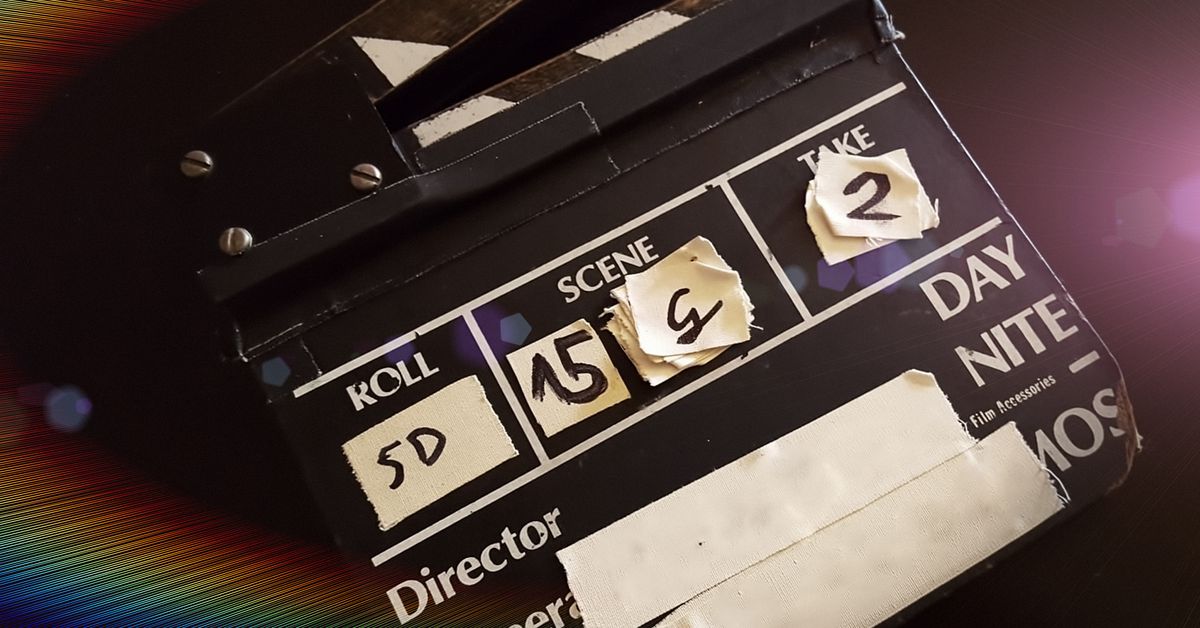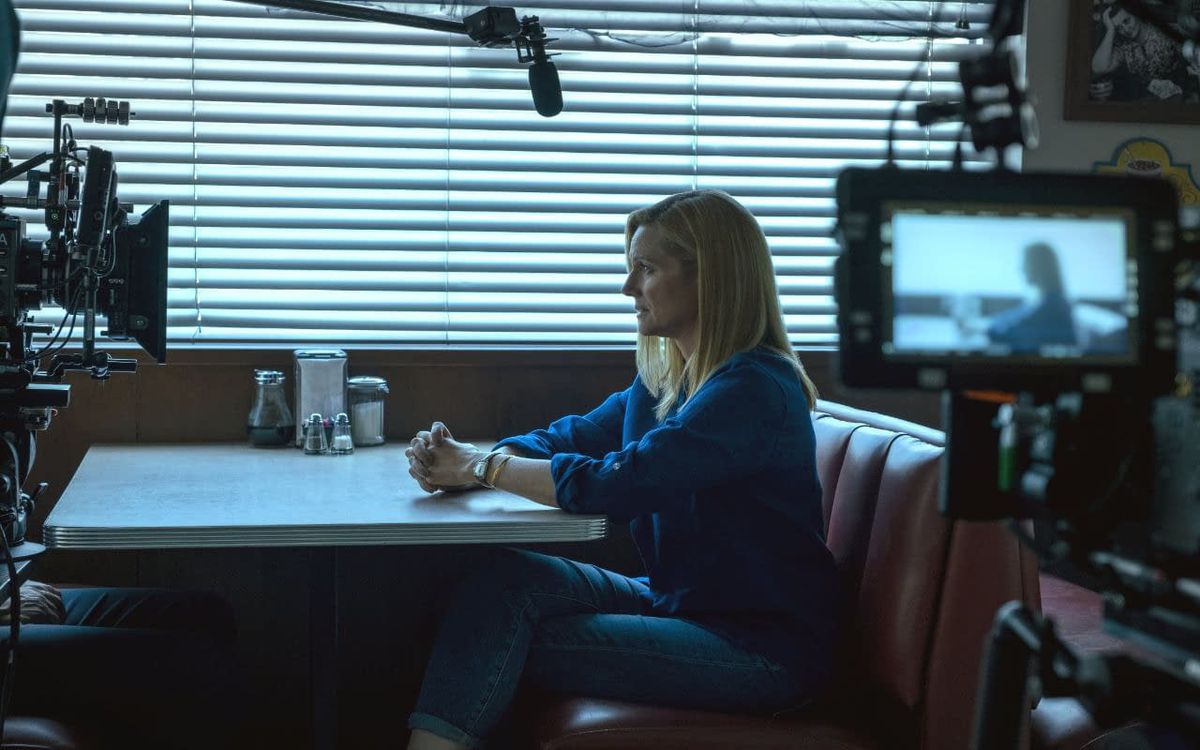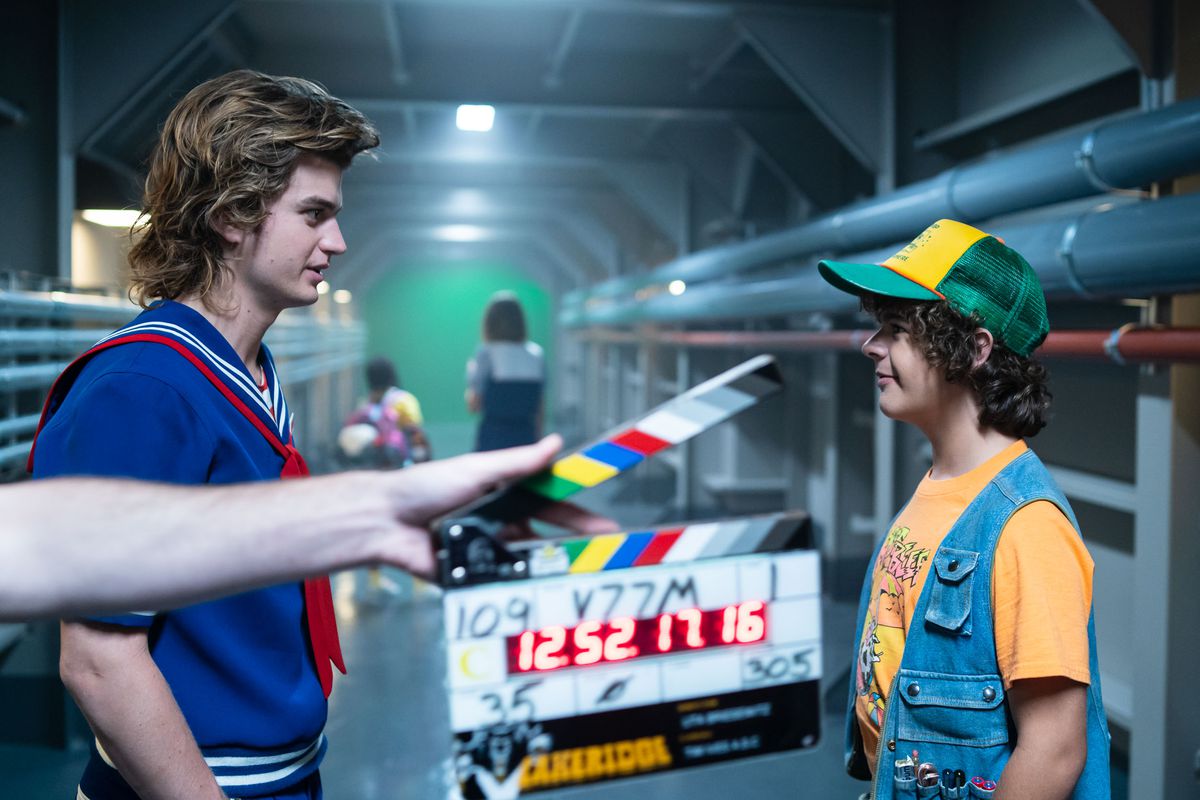
A potential IATSE strike could reshape the streaming era
On Oct. 4, the International Alliance of Theatrical Stage Employees, the labor organization that represents a majority of the craft-driven workers in Hollywood, announced the results of its vote for a strike authorization. IATSE (pronounced “eye-yahtzee”) has been in a prolonged and arduous negotiation period for a new contract with the Alliance of Motion Picture and Television Producers (AMPTP) since the summer over issues of work hours and fair compensation.
To move from negotiations to a strike, IATSE needed the approval of its members. These votes are often controversial; workers might prefer the status quo over the risk of a strike. But among the local IATSE chapters, representing 60,000 members, the vote results were strikingly clear: 89 percent of the ballots were returned, with 98 percent authorizing a strike. IATSE has announced it will only strike if the union can come to an agreement with AMPTP before Monday, Oct. 18. But what’s already been made clear from the authorization vote is that the workers have reached a boiling point.
For those not familiar with the industry, it’s vital to understand IATSE’s purpose, and how the negotiations — and potential strike — might change the way that film and television is made in the future.
The work that matters most

Photo: Netflix
In the 1890s, stage performance was the equivalent of popular media production today. Audiences flocked to theaters, whether large Broadway shows or simple vaudeville houses that cost a nickel. Actors, writers, and directors could sometimes manage a decent wage, but the same wasn’t true for the dozens of people who made the stage actually run — whether doing costumes, lighting, or set design.
In 1893, theater workers from 11 different cities formed the International Alliance of Theatrical Stage Employees, Moving Picture Technicians, Artists and Allied Crafts of the United States, Its Territories and Canada to help negotiate fair wages for those workers. Nicknamed IATSE, the union grew throughout the 20th century as it expanded to represent the workers that populated film, television, and now streaming.
Although groups like Screen Actors Guild (SAG) as well as the Writers and Directors Guilds of America (WGA and DGA, respectively) get more press thanks to representing top talent, IATSE is fundamentally the life blood of the industry, performing what is referred to as “below the line” work. These include a number of chapters that each focus on a different aspect of production — from craft positions such as camera operators, editors, hair, and production designers to script coordinators and some production assistants. Each “Local” chapter negotiates its own contracts and determines its own dues based on a structure appropriate for its members. Not every member on a set is covered under IATSE — workers have to perform a certain number of hours to qualify for the union — but it provides an important umbrella for those who have been part of the lifeblood of this industry for decades.
IATSE remains critically important because of the way it structures workers’ time off the clock. The union creates a community that can help members find work by providing lists and invitations to new productions through a roster system, and supports them when they can’t immediately book a job. Rather than receive healthcare and a pension through employers (which might switch numerous times throughout the year as they move studio productions), members receive it through IATSE’s Motion Picture Industry Pension & Health Plan. The plan has been financed through a combination of dues, financial investments, and residuals on home video and foreign distribution.
IATSE makes its Basic Agreement and the Area Agreements (for work outside of Los Angeles) with the AMPTP, a trade organization representing the major studios and numerous production companies. New players in the field like Amazon and Apple are not signatories (Netflix only joined earlier this year), but most of the production companies financed by these streamers make them de facto members that must abide by its practices. These agreements are renegotiated every three years. The 2021 contract has already expired, thus putting IATSE on a course for either a new contract or a strike.
Why IATSE may strike
Though the various unions representing writers, actors, and directors have all gone on strike or come close to it, this is the first time IATSE has even come close to striking since World War II. The problem, as everything in the industry seemingly comes down to these days, is the future of the streaming market.
“The primary focus is on right vs. wrong”
Streaming has become a boom for Hollywood, as there is more production occurring throughout the industry, which should translate to more jobs. But for IATSE members, this has often meant that the general work load times that rise and fall throughout the year, usually dependent on television’s fall and spring premiere basis, have now become steady enough to feel like a full-time position. It is often hard to say no to work, so members are finding themselves overworked.
Because Hollywood budgeting is often designed by the day (one extra day of shooting can add thousands in production costs), producers are often incentivized to squeeze as much as possible into a single day of work. This often means not only going into 14-hour days, but having crew skip meals, or forcing weekend work. Those decisions require penalties paid out to members, but often production companies budget those decisions in, and accept the extra cost as a small tax.
These working conditions, only exacerbated by the new rules and regulations of the post-pandemic era, have reached a precipice. Talk to any person in Hollywood who has worked on a film or television show, and you’ll likely be regaled with stories of dozen-hour days without breaks. The Instagram feed, IATSE stories, has been filled with horror stories from anonymized sources explaining the frustration and pain they have felt for years of work with little to show for it.
IATSE’s main goals are thus pretty simple for a strike: more regulations protecting hours and weekends, and better pay to match it for everyone involved on set.
Why the disruption of streaming matters
According to John Loeb, director of communications at IATSE, who responded to Viaggio247’s inquiries via email, “The primary focus is on right vs. wrong, human-necessities issues like living wages, reasonable rest, and sustainable benefits.” That last part has become particularly tricky with streaming.
Since the union’s 2009 contract, which first tackled payment structures and regulations for productions for streaming, IATSE has allowed the AMPTP to be flexible in its definitions given what was considered an unclear market until its profit structures might be clearer. Now that streaming is a multibillion-dollar industry, IATSE members feel a cut of those earnings for what they are calling “Not-So-New Media” are overdue. These past issues, only exacerbated by the pandemic, have thus put the IATSE pension and healthcare fund at a “dangerous low level,” according to one union member of a local chapter who spoke to Viaggio247 under anonymity. While there are plans to bring it back to sustainability, this will require a different way of calculating how studios pay in based on streaming production.

Photo: Marvel Studios
Although studios do currently pay into the pension for streaming content, the nature of the business means they pay out quite differently from traditional film and television releases. Under its previous agreements, feature films and television programs are subject to a tax at each level of their release — home video, licensing to foreign markets, and syndication, among others — and paid into the pension at a percentage of the profits each makes. Streaming properties often have little to no licensing, so production companies instead pay a flat fee based on the production budget. However, the determination for the scale for the fee (not to mention the actual wage per hours) was based on an earlier version of the market: $25,000 over or under per minute of television, or $30 million for a feature film.
At the time of the 2018 agreement, Local 700 noted that Netflix’s fantasy action film Bright was one of the few properties to qualify for a larger percentage. Now with Amazon’s Lord of the Rings program sporting a reported budget of $400 million, it is hard to think that this budget-level distinction might be capturing the true value of streaming for IATSE members. Moreover, if a streaming service has less than 20 million subscribers (such as Apple Plus and Paramount Plus), the contract allows for these giants to underpay workers while requiring the same hours.
The DGA, WGA, and SAG won better agreements on most of these issues in 2020 just as the pandemic hit, and IATSE’s goals are repeatedly meant to match this. But as some have reported, the AMPTP remains nervous about this agreement’s financial ramifications when it comes to renegotiating with these more powerful unions in 2023, and are trying to find a way out. One of the rumored AMPTP proposals is to remove members from the funds if they do not work double the amount of time a year they are now required to do, creating a mass of new precarious workers.
The AMPTP’s friction-filled battle with IATSE may ultimately come down to the impossibility of the streaming market as a financial winner. In the last decade, streaming has shifted the economics of the industry where the success of studios and the success of creative workers are no longer in lockstep. As I have argued before, films and television that play by the older rules are often still winners, while streaming properties do better in terms only in terms of shareholder value, a process more reflective of Silicon Valley startups than traditional Hollywood studios. These issues have been present in the WGA’s fight with talent agencies, as well as the now-settled lawsuit against Disney by Scarlett Johannsson. AMPTP members are notably nervous because the bounties of streaming may once again settle into the periods of booms and busts that have defined the industry since the 1940s.
What the IATSE strike means for the industry

Photo: Tina Rowden/Netflix
Right now, IATSE president Matthew Loeb has acted rather pessimistically about the negotiations. As he told the Los Angeles Times at the end of September, “The time has come. It’s unsustainable for people to work under these conditions.”
Needless to say, production cannot function without IATSE. Unlike the Writers Guild Strike of 2006, when production could continue as long as scripts were kept word-for-word the same, the major studios and other assignees of IATSE’s agreements would be unable to complete their work. Films made for under $15 million are not covered by the agreement, and thus might continue to shoot — and some HBO and Starz programs in New York operate under a different agreement for pay-TV.
But live-production programs like Saturday Night Live would immediately halt work. The long line of production means that any delays might not be significantly felt for months to up to a year. Depending where films or television shows are in the production process, many might proceed quite normally — season 4 of Stranger Things for example, might be either “locked” or close to it, meaning that the kind of production issues presented by a strike wouldn’t come into play. But many actors and other local guilds have said they may act in solidarity with IATSE workers, creating a huge issue for the studios.
Given Hollywood’s outsized role in American media, it would also shine a light on the industry. Striking workers in the food and coal industries this year have only gotten a sliver of attention. The very public nature of the industry may work in IATSE’s favor.
Why any moviegoer or TV-watcher should care
Of the many IATSE member horror stories, the worst are those who recall trying to drive home at night after double-length work days. Multiple nights of little to no sleep, due to 14-hour work days, has a punishing effect on the body, and some have described it similar to the experience of driving while intoxicated.
Deciding what to watch often feels like a harmless choice, but all of our decisions are built on moral decisions. If you knew that your favorite show was directly responsible for killing a crew member, would it change the way you watch it? If you knew that dozens had suffered while making your favorite show, might you feel differently about hitting play? Would you at least be more interested in supporting work that compensated its workers better?
One might suggest that these people get to live the dream of working in Hollywood. But the very existence of IATSE is a reminder that the industry is a reality for many people, and that, first and foremost, making movies and television shows is work that requires skills and commitment beyond the traditional 9-to-5 job. That effort deserves the same kind of protections and compensation as any kind of work.
Ted Lasso might provide lessons on how to live a good life, but the context of its actual production demonstrates that the powers behind it felt no reason to treat its employees in accordance with those lessons. The truth is, without the often-invisible work of below-the-lines craftspeople, there would be no Hollywood. Supporting the IATSE strike would create better conditions and lead to better content.
As Loeb wrote to me, the streaming fight with IATSE might seem like a new horizon, but fighting for fair compensation of workers has always been their mission. “We’ve been doing it ever since they invented silent films in the early 20th century, we’re just continuing with the torch we’ve been passed.”
